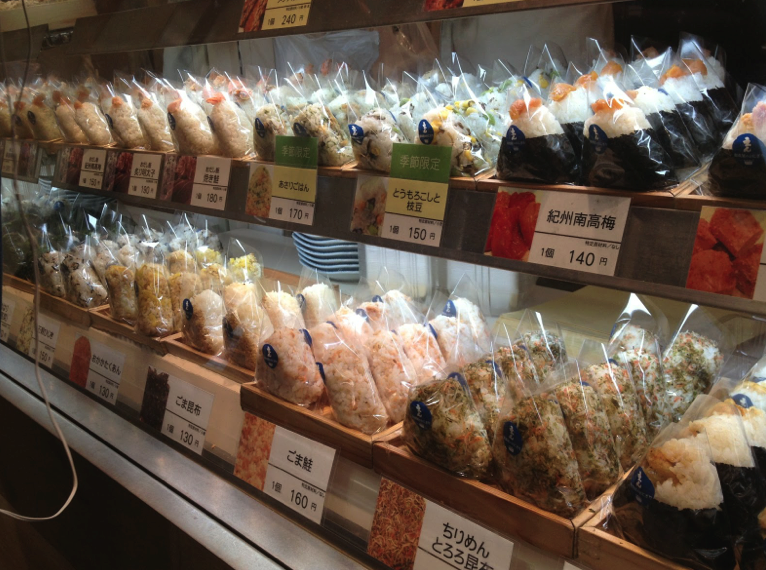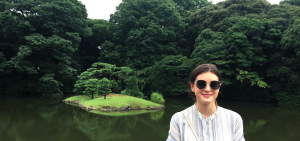By Shannon Dixon
If you ever find yourself in rural Japan living with a Buddhist monk, try not to bring flowers as a housewarming gift. I was told it was out of the normal for Japanese people to exchange Carnations to one another, and doing so will probably prompt a confused look and an awkward exchange of half smiles and giggles. Culturally, Japan is as different from America as apples are from oranges. And the same can be said about their land. Because I was lucky and humbled enough to be offered the Henry Luce Award for studying sustainable agriculture in Japan, I now know why Japanese people live the longest- they’re hard workers, eat extremely well and the Japanese land offers any sustainable plant you could ask for.
I lived as a Japanese farmer, tilling the soggy mud, filled with strong tall weeds that might as well have been glued into the ground. I picked nine different kinds of tomatoes, one which was actually called “ISIS candy”, from 8AM to 6PM. I cooked and ate some of the strangest foods, including fermented eggplants, that have a very distinct, sharp taste (I pretended to like it- mainly because in Japan it’s very rude if you don’t finish everything on your plate.) I befriended an Aikido master, who walked his Shiba past the farm, four times a day, and who loved to eat fruit popsicles. And (if not obvious already) I learned “how to farm” in a completely isolated lumber town in Japan.
In order for me to farm, I took a few hour bus ride into the middle of nowhere, only surrounded by mountains. The deeper into Japan I got and every time the bus stopped, younger people got off, and older people got on. At first I didn’t notice anything. But after awhile I realized I was the youngest person on the bus by probably forty years- at least. Since the bus ride was long, I had a lot of time to come up with reasons why this was the case. The first thing I noticed was how well the older Japanese people could walk. As an American, I’m used to eighty and ninety year olds in wheelchairs or at least walking with a limp and cane. Without exaggerating- the people I sat on the bus with could walk without limps, just as fast as me- a twenty year old very, healthy girl. But why? It’s simple- their food. Japan holds the record to have the healthiest, oldest people in the world. From what I’ve been told- it’s mostly due to their strict eating habits and lifestyle. For the most part, they eat a lot of fish, rice, fermented everything, and extreme amounts of vegetables. These foods have been the pillars for Japanese’s ancestors to live long health lives.

Japan’s food culture has revolved around wet rice cultivation, with the addition of vegetables and noodles for more than two thousand years. The Buddhist monk, Zenyru, I lived with was a vegan-which meant by default I was a vegan. He lived in a monastery for twenty years- where he continually fasted for twenty days straight- without water or food. In the monastery he was taught to eliminate all meats and animal products from his diet- making “Shojin Ryori”, vegetarian cooking, his way of life. This type of eating began a long time ago in the 6th century, when Buddhism was introduced into Japanese society by the Koreans. Today it is still taught that Buddhists are not allowed to harm anything- meaning you especially can’t eat meat. So everyday I would sit cross legged at the table- eating Miso, Tofu, soybeans, noodles, vegetables, and homemade pear wine.
While this healthy eating and lifestyle was the case for me- it is hard to find a “farm to table” type restaurants in Tokyo or Kyoto. Today, scientists have revealed that people living in Japanese urban settings have seen a rise in obesity and “western eating.” Bento boxes and fast food eating are extremely popular and because of the typical long hours people work in Japan- thus, convenient food is on every corner
I was told by one of the farmers that I worked with, that only two percent of Japanese farms are organic. Not only is this a scary statistic- it’s also very alarming.
While I picked tomatoes, cut Thai basil off their stems, and pulled Japanese ginger, which happens to be the slimmest vegetable I’ve ever touched- I was taught the scary facts about the future of Japanese farming. Zenyru expressed his deep concerns with me about the future of Japanese farms and younger generations. He explained to me that he is often not accepted into Japanese society and finds it hard to connect with other farmers who use harmful chemicals and pesticides on their plants. While I agreed and thought about the physical consequences this will have on Japanese land- I also couldn’t help but thinking positively about Japanese society and farming.
While this transnational conflict is like a gray cloud above- there is a small, hopeful peak in the “back to the farm” movement. Since farming, food, and plants make up a big part of Japanese culture- there is an increase in urban farm development and vertical farming.
The future of Japanese farming, while it may look dismal, I believe- will be successful. Young urban people are beginning to understand how important farming and food is for Japan. Even though almost 80% of Japan’s population live in cities- most of which are younger people (as you know from my bus story)- there is still hope for innovation in urban settings. Today, Japan has the largest demand for organic products-(even above the UK and US) and the government has already put strict rules on correctly labeling their food products. So, while these steps are towards progress… Japan still has a long way to go.
Young generations need to be informed not only about how to grow, harvest and prepare traditional Japanese foods, but also about the history of food in Japan. Maybe Wwoofing is the first place to start. P.S. A HUGE thank you to the Henry Luce Foundation for this crazy, life changing experience!


